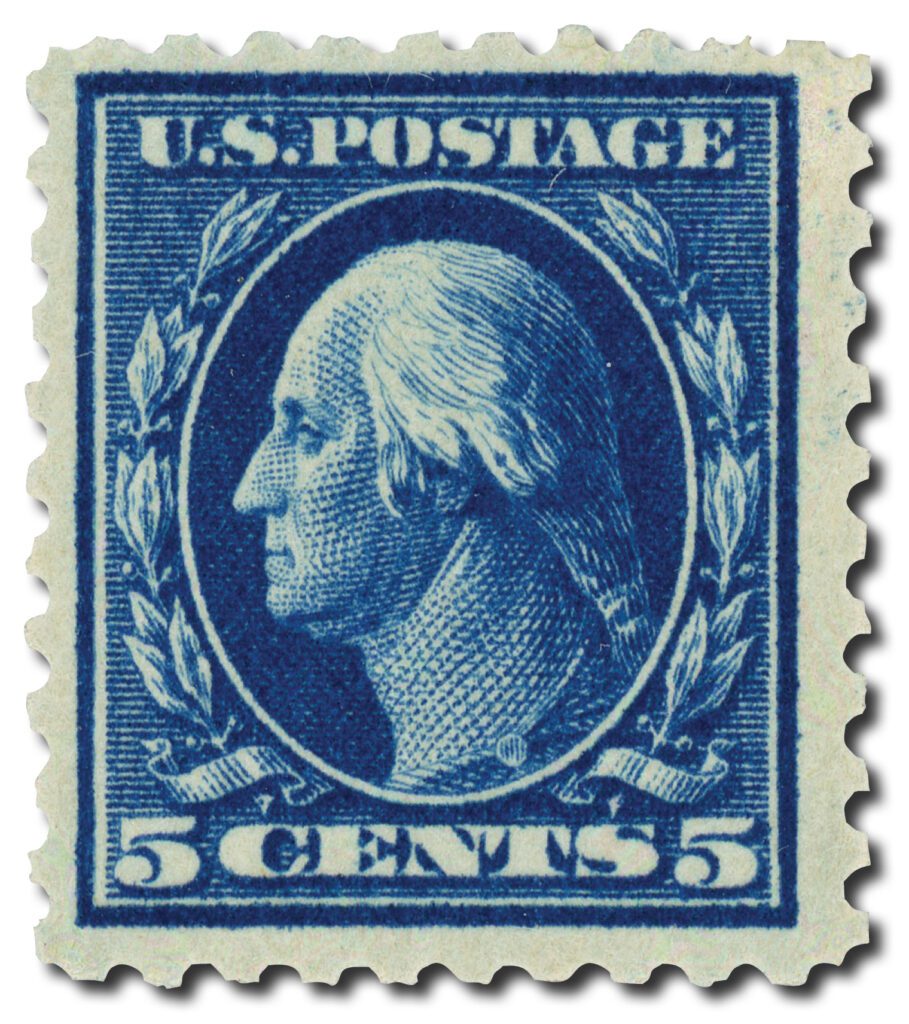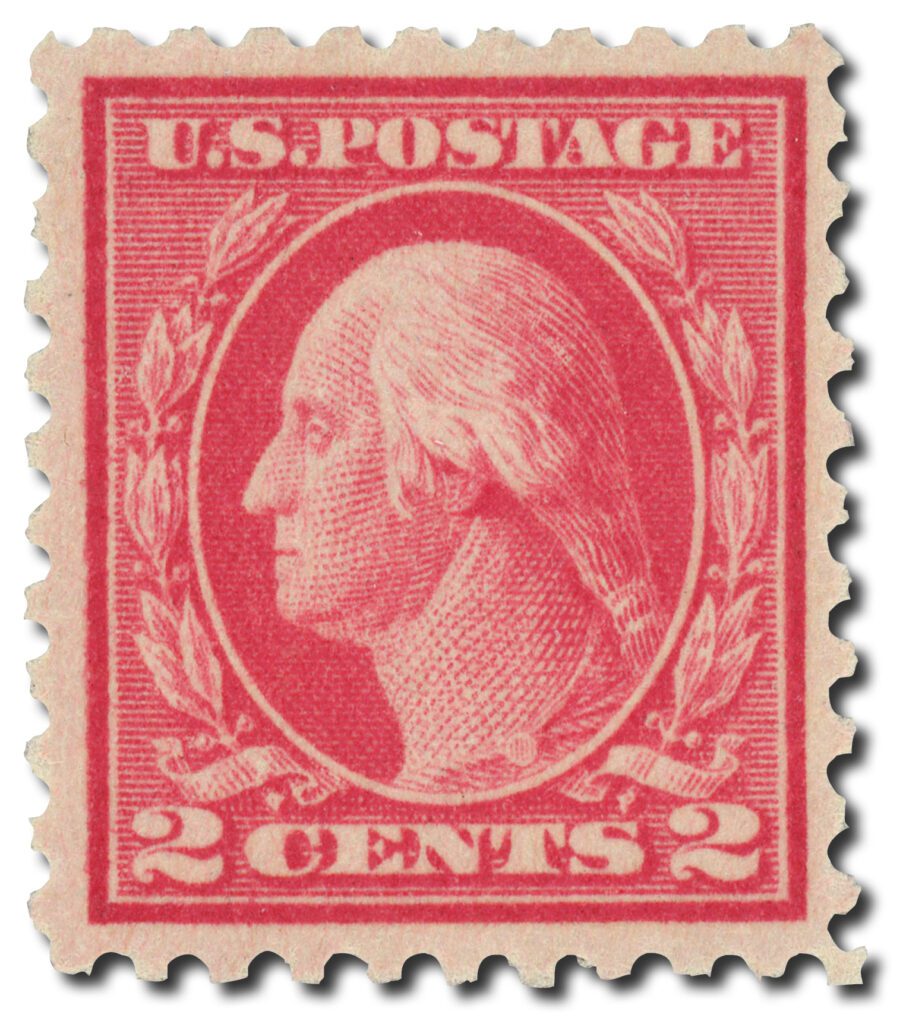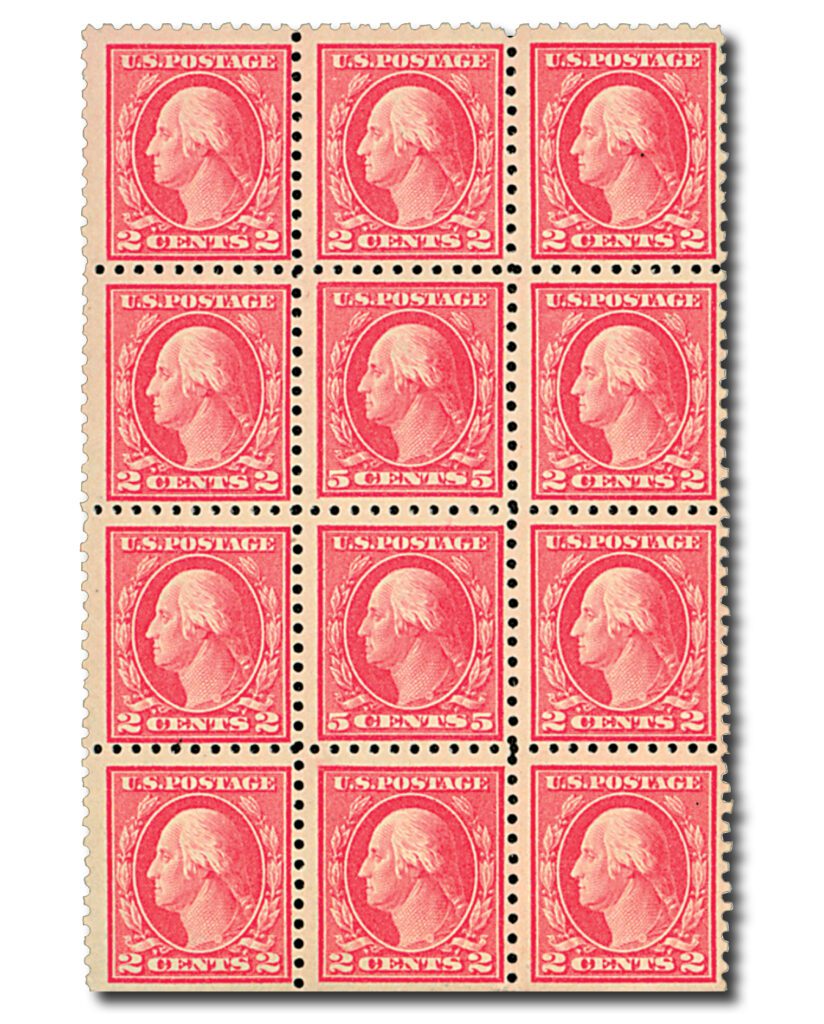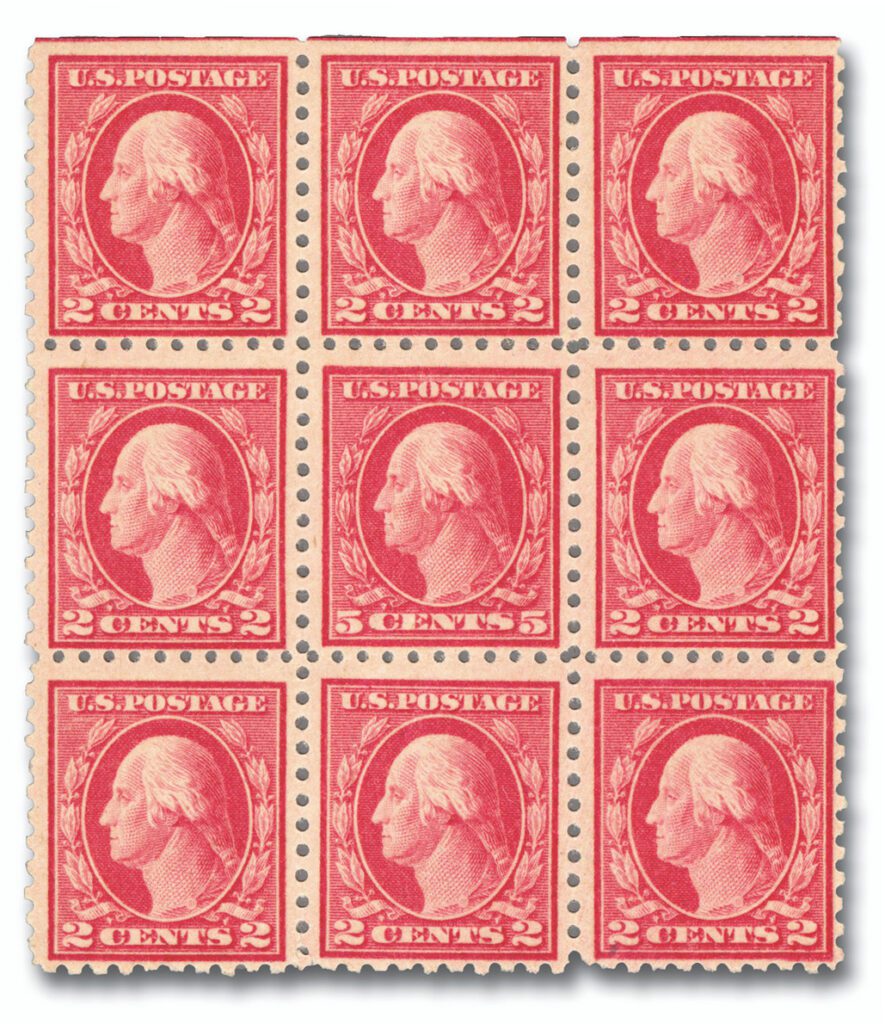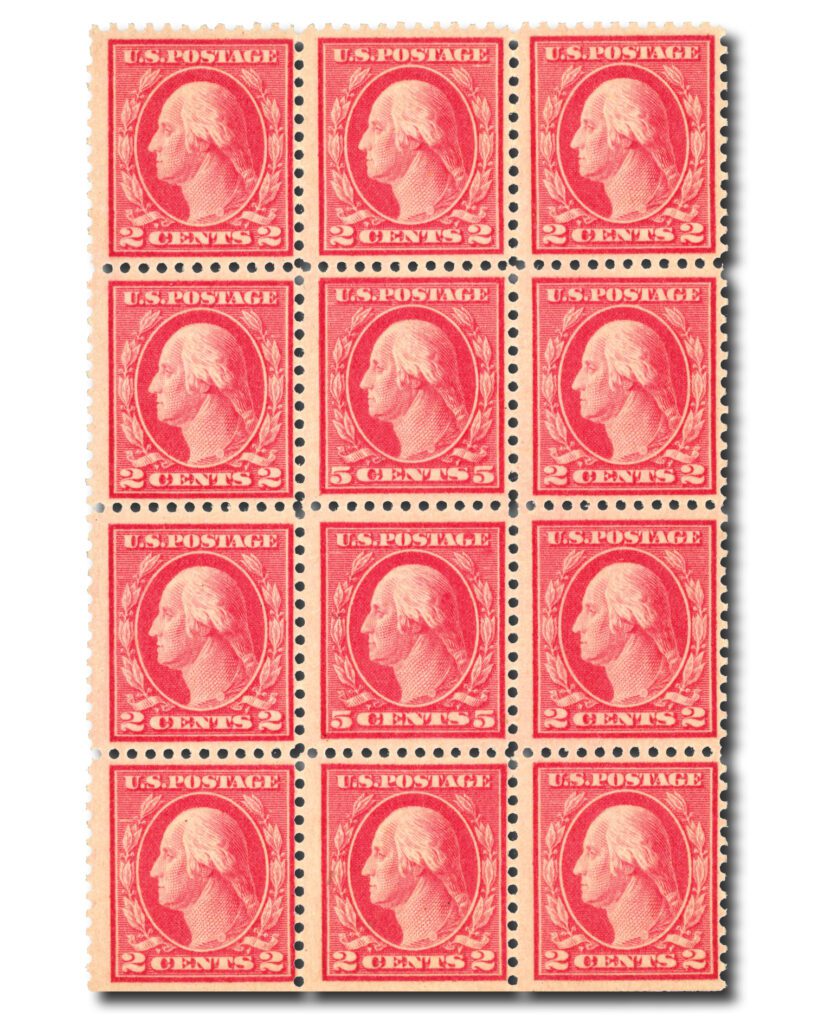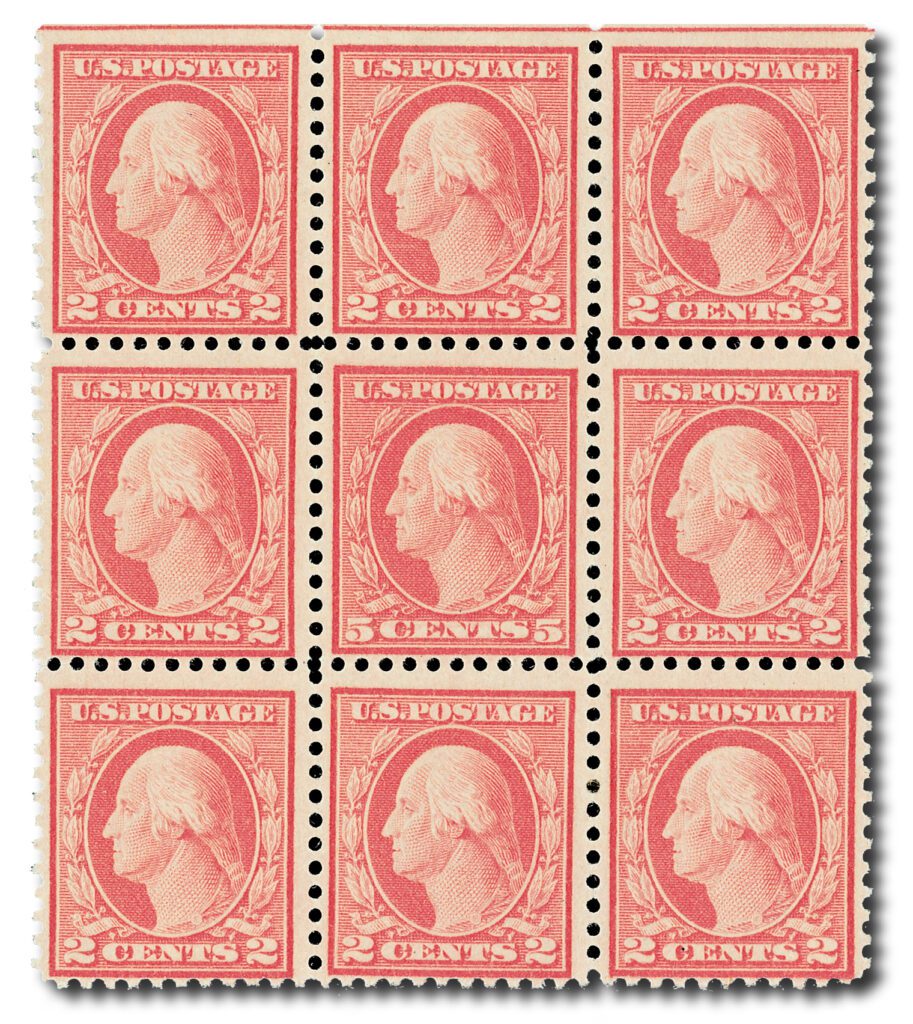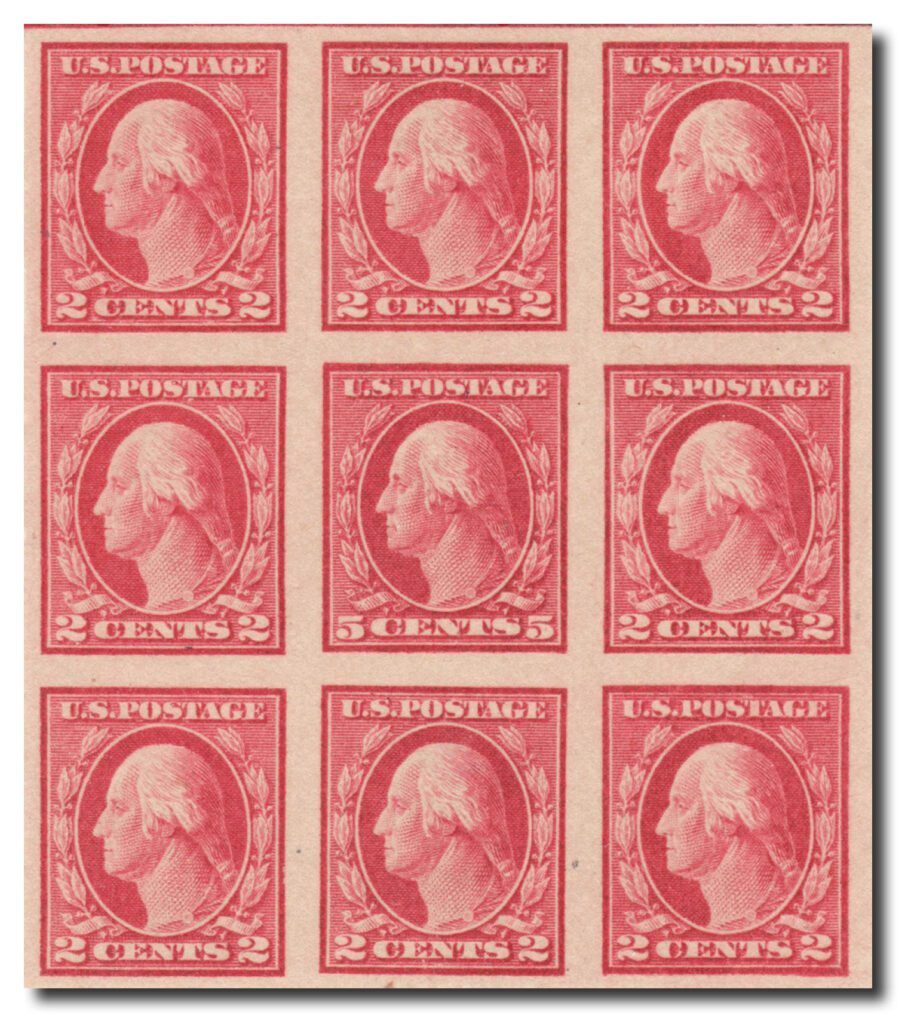1916 5¢ Washington & Its Errors
On October 17, 1916, the US Post Office introduced a 5¢ Washington stamp. This stamp’s design accidentally created some famous errors…
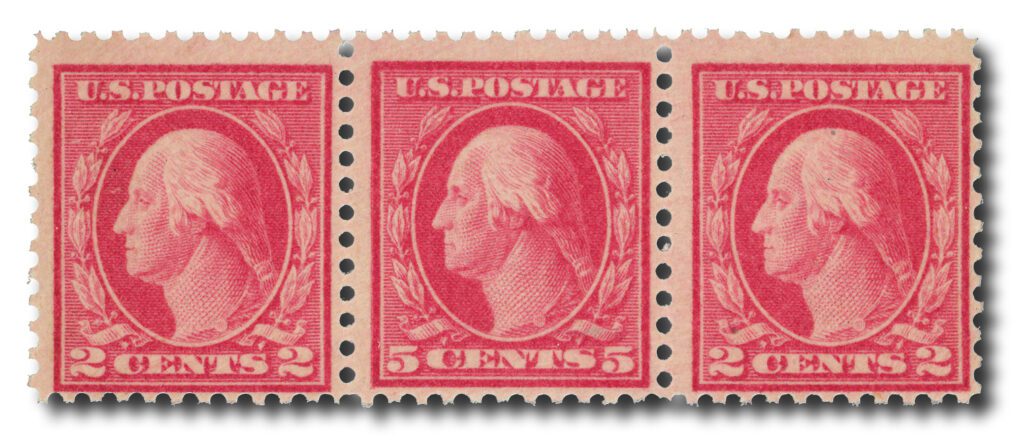
In 1916, the Bureau of Engraving and Printing (BEP) began producing stamps on unwatermarked paper. With the United States already close to a wartime economy as World War I raged in Europe, the lower cost for the paper added up to big savings for the Bureau. Since the Series of 1916 Washington-Franklins used the same design as previous stamps, it was easy to miss whether it was new unwatermarked paper or paper with faint single marks. Many collectors overlooked these stamps when they were first issued.
Adding to the confusion was the continued use of 10 gauge perfs. A year earlier, 11 gauge perforations had been introduced, and the collecting community expected to see new stamps with that gauge. But in another cost-cutting move, the BEP continued to use the 10 gauge perforating rollers until they wore out completely.
The 1916 5¢ Washington, US #466, was among those stamps and was primarily used to pay the postal rate for foreign mail. Two famous errors also occurred during #466’s production. Both were 5¢ red stamps (that should have been blue) that were mistakenly printed on sheets of 2¢ stamps.
So, how did 5¢ stamps find their way onto 2¢ stamp sheets? This story begins in 1917, during the height of World War I, with an overworked and understaffed BEP struggling to keep up with wartime demands. An inspector at the Bureau proofed a sheet printed by plate 7942 of the current 2¢ issue, US #463. Three of the impressions made by the plate were found to be unsatisfactory, and the inspector ordered them replaced.
To understand what happened next in the double error story, it’s important to know how these plates were produced. First a design is engraved on steel. Proofs are taken from this engraving. Once these proofs are approved, the steel of the original engraving is hardened, and it becomes the “die”. A transfer press is then used to transfer the die’s impression onto a cylinder of soft steel, known as the “roll,” which is in turn hardened. This roll is then put in a “siderographer’s” transfer press, which again transfers this image into the steel plates that are used to print the stamps. In short, a die is used to make a roll, which is used to make the printing plates.
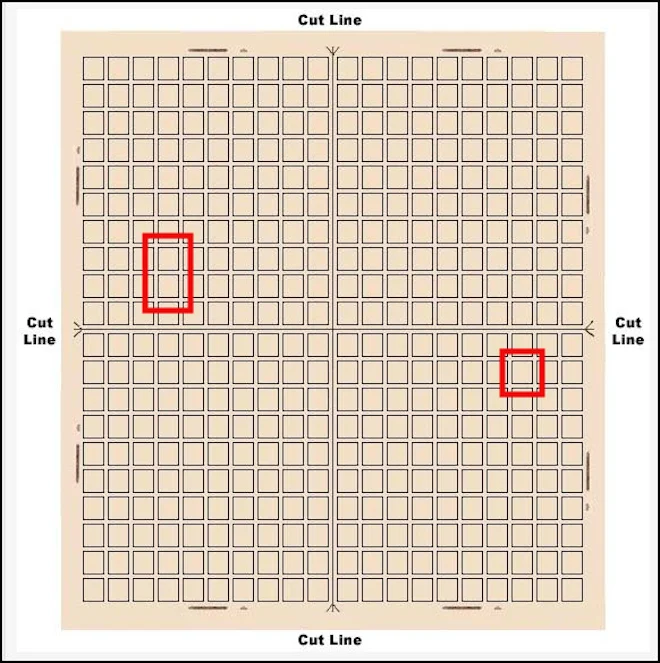
On plate 7942, the impressions for stamps 74 and 84 on the upper left pane of 100, and stamp 18 in the lower right pane were found to be defective. The worker who repaired these three impressions accidentally replaced the 2¢ designs with 5¢ designs. Considering that the “5” on the transfer roll is very similar to a reversed “2”, it’s not surprising this mistake was made. Because of the great strain placed upon the overworked employees of the BEP, the proof sheet was not inspected again. Production continued, and the sheets were eventually distributed to post offices.
Soon blocks of twelve containing a vertical pair of 5¢ stamps (sometimes referred to as the “double error”) and blocks of nine containing a single 5¢ stamp (often referred to as the “single error”) began to appear. Although the Post Office recalled all the sheets bearing the plate number 7942, some had already been sold and put into circulation.
When the sheets created from plate 7942 containing the 5¢ error stamps were sent to the perforation stage of production, most of the machines at the BEP had been changed to provide a perforation of 11. In fact, most sheets containing the 5¢ errors were perforated with the 11 gauge machines, and are thus much more common than the perforated 10 type. The perf. 10 stamps were given the Scott number US #467, while the perf. 11 stamps were given the Scott number US #505.
Additionally, some of the sheets were left imperforate. These stamps were intended to be provided to private perforation companies that sold the stamps via stamp machines. The companies used their own perforations that worked best for their machines. However, by the time these stamps were printed, only the Schermack company was still perforating these imperf stamps. The Bureau had printed far more than this one company needed, so most of the imperforate sheets were then sold directly to collectors. Plate 7942, with its errors, was used to print some of these sheets, resulting in the imperforate red 5¢ stamp, US #485.

